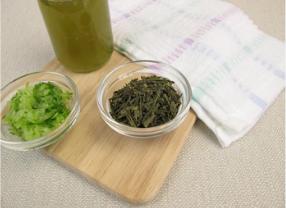
Impurities in tea are divided into tea impurities and non-tea impurities. Tea impurities are tea stalks (divided into young stalks, old stalks, and lignified stalks), tea seeds, tea parkers, tea flakes, tea powder, etc. Non-tea impurities are in the harvest, system, storage, and transportation mixed in the debris, including animal insects, feathers, eggs, plant bamboo, wood chips, leaves, weeds, seeds and mineral iron filings, sand, soil, etc. The content of tea impurities is one of the indicators for assessing the quality of tea. Non-tea impurities affect drinking hygiene. Tea inspection standards provide that "tea must be clean and shall not contain non-tea impurities.
As a recognized leader in tea testing, Lifeasible can develop the best tea impurities testing solutions to help customers check for tea impurities and non-tea impurities mixed into their tea.
We aim to help our customers ease the tedious process of tea impurities testing. We offer standard methods for tea impurities testing:
| Tea Impurities Testing Methods | Application | Specific Description |
| Sieve test method | Detection of large impurities on the 5-mesh square hole sieve. These impurities are larger and more visible. | Inspection according to the prescribed method, sieve a certain number of samples by batch then check the number of impurities, divided by the amount of sieve inspection (kg), expressed as a / kg. Small package tea impurities by box; check the number of boxes with inclusions, divided by the total number of boxes sieved (listening, bags), expressed as a percentage. |
| Hand test method | Detection of impurities below the 5-hole sieve. | Test take 100 grams of fully mixed tea, poured on clean, smooth white paper, first rake back and forth with a magnet, and check whether there are iron filings sucked out. Then use tweezers to check out other non-tea inclusions one by one; together with the combined weighing, calculate its inclusions content, expressed in mg/kg. |
The content of non-tea impurities in tea directly reflects the level of processing technology and health condition of the producer, which has attracted sufficient attention from producers and managers. We will standardize the detection of tea impurities according to the type and physical characteristics of non-tea impurities. In addition, we continue to develop reasonable impurity-taking equipment, improve the process of removing impurities, introduce new impurity-taking equipment, and improve the technical level of removing impurity foreign matter. If you are interested in our solutions, please contact us for technical consultation and quotation.
Lifeasible has established a one-stop service platform for plants. In addition to obtaining customized solutions for plant genetic engineering, customers can also conduct follow-up analysis and research on plants through our analysis platform. The analytical services we provide include but are not limited to the following:
Get Latest Lifeasible News and Updates Directly to Your Inbox
Adaptive Evolutionary Mechanism of Plants
February 28, 2025
Unraveling Cotton Development: Insights from Multi-Omics Studies
February 27, 2025